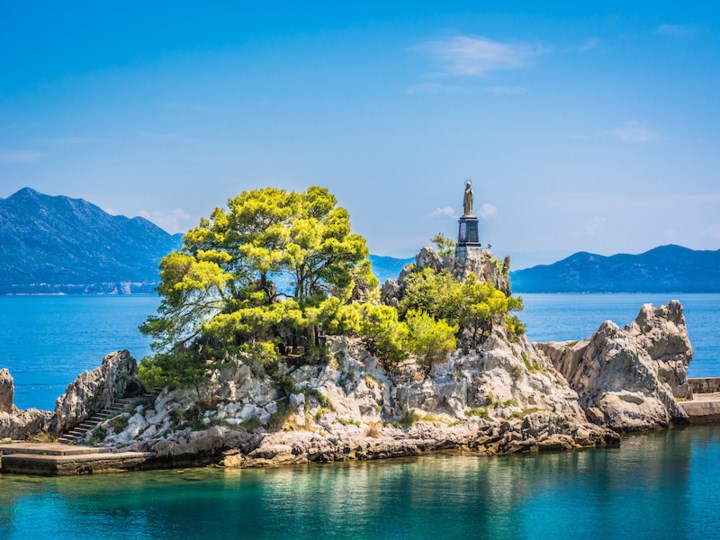In the 80s it was one of the tourist hot spots in Croatia.
Easily accessible from all four geographic directions, whether by car, plane or ship ... Everything on offer that you could want for a relaxing and varied holiday:
nice weather, hospitable locals, sports, culture and a wide range of gastronomy. But above all: this narrow piece of land is surrounded by the Adriatic Sea and connected to the mainland at a narrow point. Today it has become calmer, but even more attractive. We are talking about the
Peljesac peninsula.
Here are a few facts before we turn to the specifics:
Peljesac is the
second largest peninsula in Croatia after Istria with about 350m2. It is 77km long, between
Mali Ston in the east, where it is also connected to the mainland, and
Loviste in the far west. The approximately 8,300 inhabitants are divided into 4 municipalities: Orebic, Ston, Trpanj and Janjina. The hilly landscape inside is endowed with diverse vegetation and reaches its highest point at 961m at the top of the
mountain "Sveti Ilija". At the same time, the rocky coast is adorned with
beautiful bays and great beaches.

The most famous place is probably
Ston with the
longest walkable defensive wall in Europe and its
natural salt garden, in which salt has been extracted since ancient times and which thus represents a "living" cultural monument. You shouldn't just drive past Mali Ston either. Visit the other end of the fortress wall and enjoy the fruits of the sea. The small town is
known for its mussel farming, but
especially for oysters, which are served here
directly from the sea. Oh yes, at the top of the dessert menu is "
Stonski Makaruli", you should definitely try this
unique cake with macaroni, walnuts, almonds and apples!
But what does Peljesac stand for in Croatia? If you ask the Croatians, the name of the peninsula stands for
excellent wine, which you should taste as a wine lover. The best way to do this is to visit the
Dingac tunnel. 400m long, it leads from
Potomje to the south side of the peninsula, on the
steep slopes of which the grape grows, from which the famous Dingac is made. In 1973, the tunnel was built by the winegrowers themselves, as they had to struggle over the mountain with their
donkeys.
 Orebic, a seafaring town
Orebic, a seafaring town and the old hometown of many captains, lies at the foot of the highest mountain "Sveti Ilija". If you decide to take a sporty mountain hike, you will be rewarded with a
breathtaking view of the city, surrounding vineyards, nearby islets and the neighboring island of Korcula. The
Nakovana cave, since 6000 BC a sacred site of the Illyrians, was only discovered in 1999 and is still being researched. With its 2000-year-old finds, it is one of the most famous archaeological sights in Europe.
The
Franciscan monastery with the
church “Gospe od Andela” is located up here. As a sign of gratitude and to seek protection from her, the sailors and captains greeted the Madonna of the Angels with their sirens as they entered and left the harbor. In response, the bells of the church tower rang from the mountain.
But let's get to the main attraction:
the sea. Crystal clear, wonderful turquoise blue sea. If you are more of a fan of
water sports, it is not far to
Viganj, the ideal place for wind and kite surfers. Weak currents and a predominant maestral offer good conditions.

If you just want to
relax while the kids are having fun, you should go to one of the
great beaches: "
Prapratno", a bay protected by high rocks with a great sandy beach, the bay "
Vucine" below a pine forest in the village
Zuljana or the beach "
Divna ”on the north side of the peninsula with its fine gravel and surrounded by
plenty of shade. On the beaches of Peljesac, small beach cafes are also open in the summer months, where you can get drinks and snacks. Exactly the right thing for the whole family, don't you think?
Visit the Peljesac peninsula, book one of
our villas in Dalmatia and take the whole family with you. Enjoy every moment, experience unforgettable adventures,
create memories ...
Daniela Vuleta
12.1.2022

 MY ISTRIA GUIDE
MY ISTRIA GUIDE



